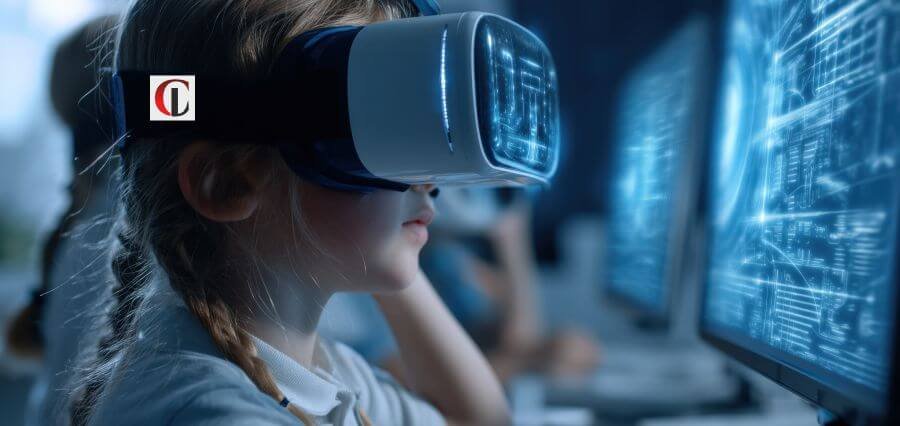With today’s quickly evolving learning environments, traditional instructional strategies are barely positioned to compete with the competition in engaging and retaining students. With the general existence of information technology and shifting study habits, instructors are called upon to adopt new ideas that encourage learning engagement, stimulate collaboration, and facilitate critical thinking. Effective engagement in learning not only guarantees that students are successful academically but also equips them with valuable life skills such as communication, creativity, and autonomy. The movement towards new modes of instruction is a necessity in an attempt to meet the diverse and dynamic demands of today’s generation of learners. New teaching styles focus on interactivity, autonomy, and strategic use of technology.
This article outlines methodologies allow for the creation of more inclusive, participatory, and responsive classrooms that are attuned to multiple ways of learning.
Utilizing Technology to Optimize Engagement
One of the most intriguing changes in education today is the integration of technology into the classroom. Learning management systems (LMS), online learning settings, and interactive tools facilitate adaptive and dynamic presentation of material. Educators can use the functionality of videos, simulations, and gamified activities to break down complex concepts and make them more accessible and engaging for learners. Digital quizzes also provide instant feedback, and both students and instructors can monitor progress and make better-informed teaching decisions.
Apart from content sharing, technology also supports collaboration and communication among and between students and with teachers. Platforms like Google Workspace, Microsoft Teams, and learning applications enable co-creation, peer review, and collaboration in real time. They enable a community of learning where students collaborate, ask questions, and work together towards shared goals. In addition, technologies like virtual reality (VR) and augmented reality (AR) provide learners with the opportunity to interact with subjects experientially, rendering intangible concepts concrete experience. Technology, however, should not be perceived as a remedy. It works only if it is appropriate for applying teaching methodologies.
Active Learning Strategies in the Modern Classroom
Active learning methods are the basis of modern pedagogy. These methods revolutionize teaching from mere listening to active engagement in learning. Problem-based learning (PBL), peer teaching, and class discussions are some of the methods that engage students to learn by encouraging them to learn subjects, to process, and to create solutions in groups. These methods enable students to achieve greater mastery of content and to master critical skills such as critical thinking, communication, and collaboration.
Creating an engaging learning environment is not just a matter of recreating activities but requires changing classroom culture where students feel at ease to ask questions, propose suggestions, and err. Such environments permit creativity and risk-taking. Low-key strategies like think-pair-share, group discussion, or project assessment can be adapted by teachers to include more interaction. Furthermore, rearranging the seating arrangements in classrooms to accommodate group learning or the deployment of mobile whiteboards and collaborative electronic areas can spatially and socially facilitate active learning principles. In this model, the teacher is guide and facilitator. Rather than information transfer, instructors support learners as they identify problems, formulate hypotheses, and examine consequences.
Personalizing Instruction for Diverse Student Needs
Individualized instruction is a central feature of modern instruction. It is the process of instruction being tailored to students’ individual needs, abilities, and interests. Through the software of computers and data analysis, teachers can identify particular areas of need and offer one-on-one support or alternative paths to mastery. This allows students to learn at their own pace and assures that instruction is graded according to their readiness levels and individual goals. Personalization also means giving students different degrees of voice and choice in learning.
When students have voice and choice in how they demonstrate understanding of something, they will be more likely to be interested and motivated. For instance, a student can choose to demonstrate mastery of a concept by a video presentation, written report, or creative product. Teachers also tailor teaching using flexible groupings, differentiated assignments, and time for reflection on the self. These methods meet academic needs and respect students’ learning styles, interests, and cultures. The student-centered learning environment enhances students’ confidence and motivates independent learning. Since students are aware that their own effort is appreciated and learning is done to cater to their personal needs, they become responsible for their learning and development.
Conclusion
Modern practice of instruction is an innovation in harmony with the ever-changing needs of students and increasing complexities of their surroundings. By blending technology, active learning, and personalized instruction, instructors can develop class teaching strategies that are as effective as they are captivating. These types of teaching not only lead to better learning but also help develop the requisite skills among students to thrive in the more dynamic world of today. To be able to successfully implement these strategies, teachers must have on-going professional development and support from institutions. Professional development workshops, peer support, and exposure to state-of-the-art resources allow teachers to stay abreast of best practices and experiment without fear. With these investments, schools can establish a culture of innovation and responsiveness benefiting both the teachers and the students.
Read More : Most Inspiring Woman Changing Lives Worldwide

